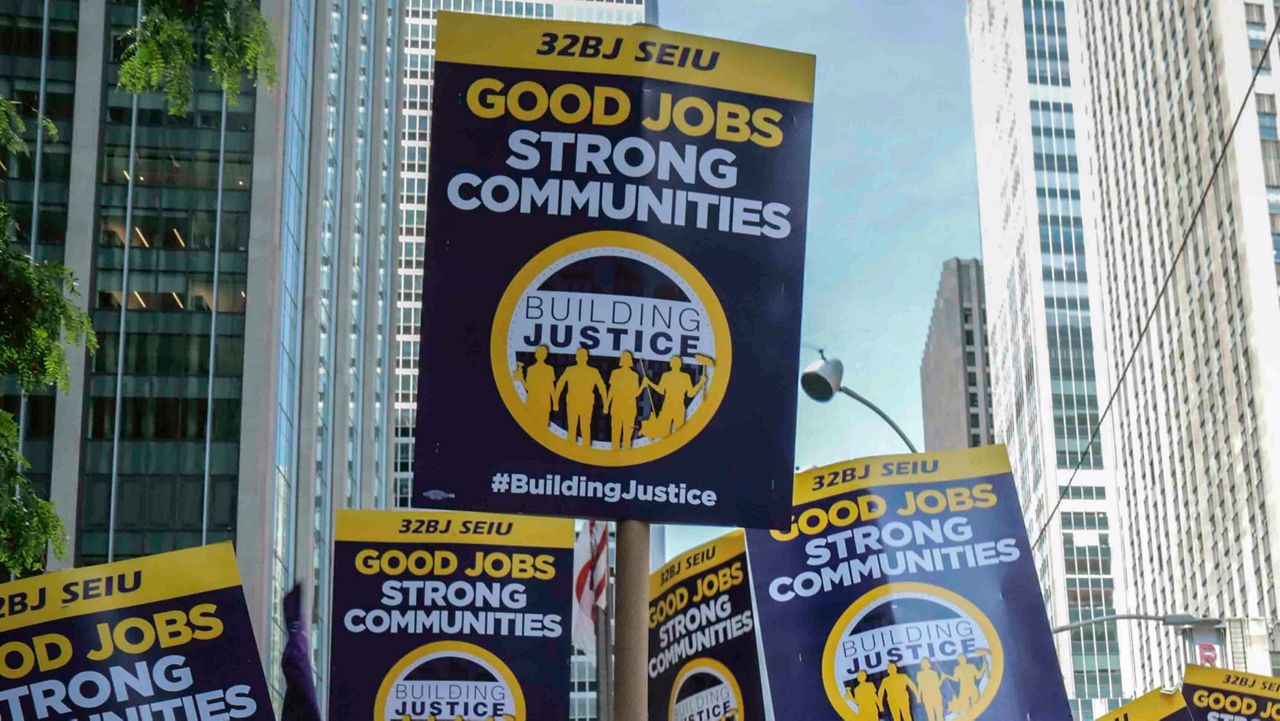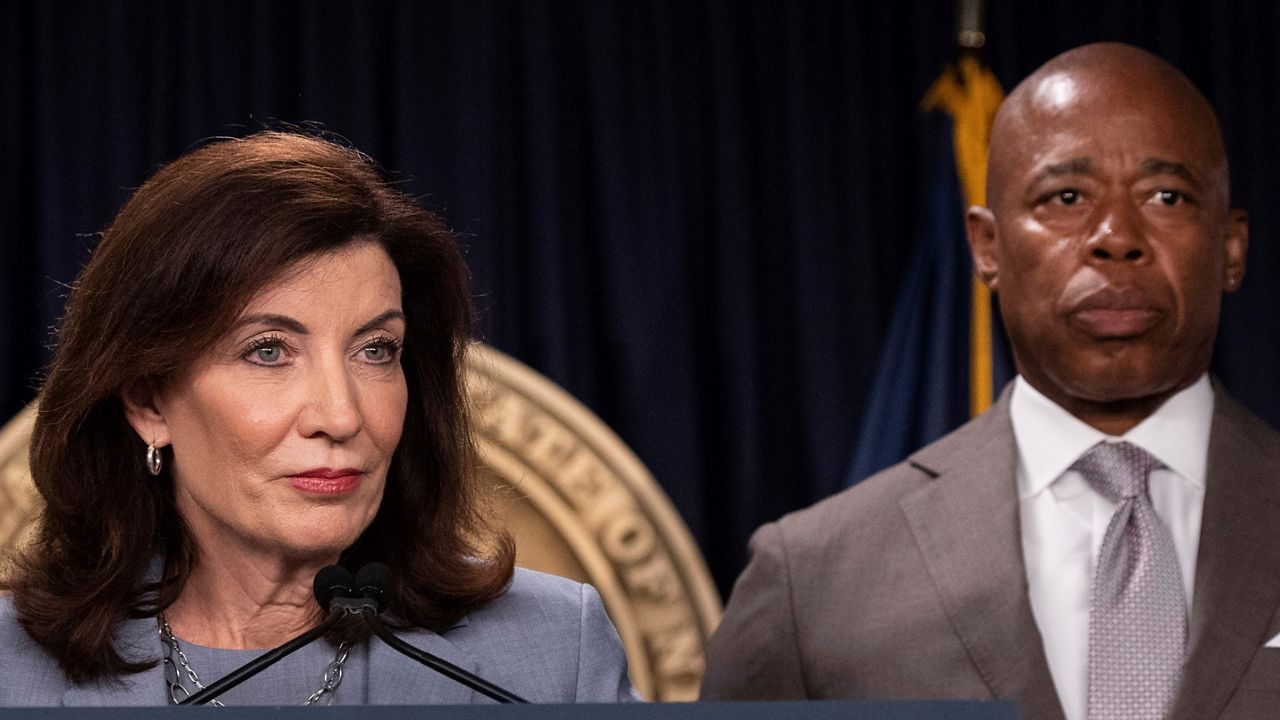Mayor Eric Adams wants more money from the state to help with the migrant crisis, but he never asked the governor for it directly when he met with her privately Tuesday in Albany.
Gov. Kathy Hochul said that Adams never told her about a new request he made to the Legislature — that the state would pick up at least 50% of the city’s migrant costs.
“After the mayor left, he sat right in this room with me and thanked me profusely for the support of the state of New York for what we’re doing over two years — $4.3 billion,” she said Wednesday at a press conference in the State Capitol Building.
“He did not put in that request to me. I also understand that when I go to Washington, I put my hand out and I ask for a lot of money. And I’m grateful for what we get and he’s grateful for what he’s getting,” she added.
Adams testified before the Legislature on Tuesday, known as “Tin Cup Day,” arguing that the city is $400 million short in migrant funding from the state.
“In our budget, we assume that the state will meet its commitment to cover one-third of $10.6 billion in migrant costs over Fiscal Years ’23 through and ’25. As of the governor’s Executive Budget, the state’s commitment to the city is just over $3 billion — or roughly 28 — which is $400 million short,” he said in prepared remarks.
“This, along with $200 million in budget hits like the Distressed Hospitals Fund sales tax intercept and school aid reduction, grows our Fiscal Year ’25 gap by $600 million. New Yorkers are already carrying most of the asylum seeker costs. It is wrong to ask them to do more, and it puts our city in a precarious position. Today, we are asking the state to increase its commitment and cover at least 50% of our costs,” he added.
Last year’s state budget assumed that the Biden administration would split at least one third of migrant costs with City Hall and the state. Instead, Biden sent the Big Apple around $150 million in aid.
Hochul said that City Hall’s accounting doesn’t track dollars spent on several large-scale migrant shelter leases, of which the state is picking up 100% of the tab.
“What that does not factor in are the 5,000 units that we’ve already done in Creedmoor, at Lincoln Correctional Center, at Randall’s Island and Floyd Bennett field so if you add all those 5,000 [units] which are not part of the equation, we said we would absorb those costs entirely,” she explained. “So, we are already making substantial contributions to deal with the problem.”
Lawmakers say the state should step it up a notch.
“I do think that the state can step up monetarily, especially where the feds have failed. I also think the rest of the state can take a portion of the migrants that we’ve been welcoming in New York City to the best of our ability,” State Sen. Jessica Ramos told NY1.
“The issue is a federal issue. But once they come in within the jurisdiction in New York State, we have a duty to make sure we protect folks,” State Sen. Jamaal Bailey said.
Hochul’s $233 billion fiscal year 2024-2025 budget plan proposes a $2.4 billion allocation to the city for migrant costs.
The state budget office says this year’s proposal includes: $1.1 billion for shelter costs, $651 million for HERRCs at Creedmoor, Randall’s Island, Floyd Bennett Field, $555 million in non-shelter costs, $134 million in safety net assistance. That’s on top of the $1.9 billion allocated in fiscal year 2023-2024, arriving at a combined $4.3 billion.
Adams’ budget director Jacques Jiha said Tuesday the city needs $4.6 billion total from the state that will bleed into the city’s fiscal year 2025.
The state and city operate on different fiscal years: the state’s cycle is between April 1 and March 31 of the following year. The city runs slightly behind, between July 1 to June 30 of the year after.







